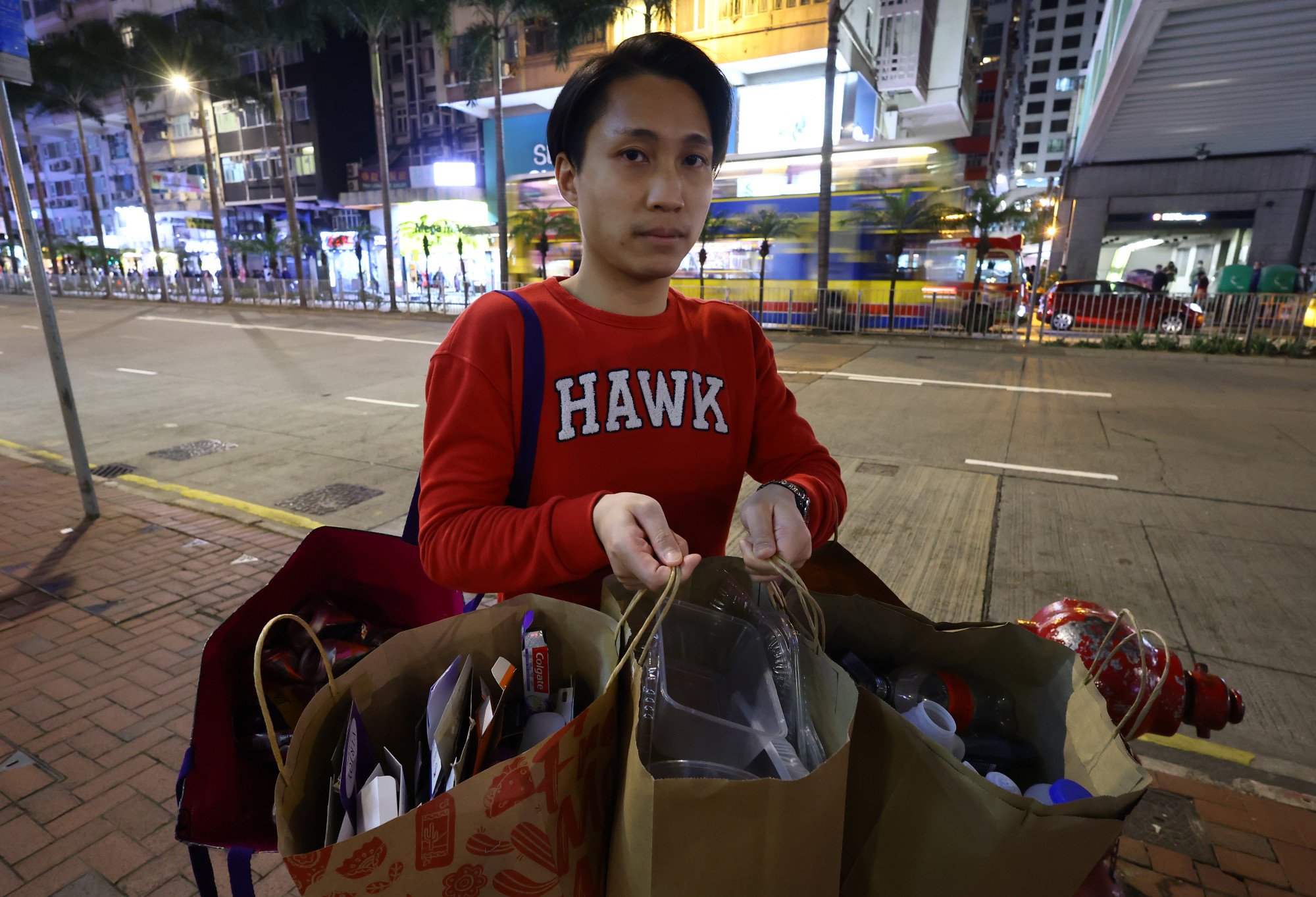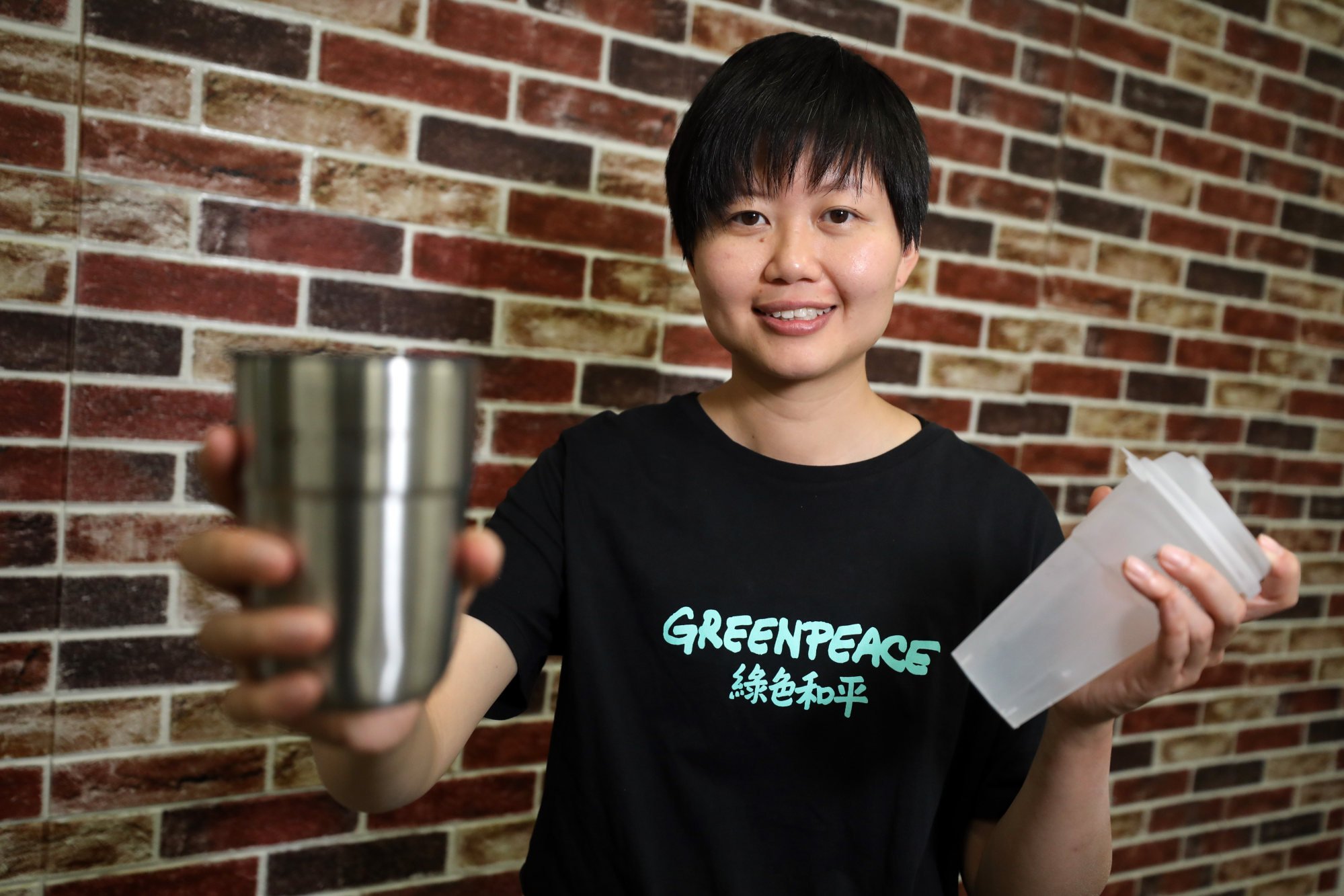
Will Hong Kong’s single-use plastics ban recycle one problem into another? Green groups warn of dangerous substitute items
- Green groups say Hong Kong’s two-stage ban omits paper packaging using waterproof coatings that can generate microplastic and release ‘forever chemicals’
- ‘Besides environmental protection, such substitutes should meet food safety conditions,’ Green Earth adds
As Hong Kong prepares to launch the first stage of its single-use plastics ban on April 22, the Post looks at the policy’s potential pitfalls and how the public can adjust to the shake-up.
The two NGOs also took aim at a pair of lists from authorities covering exempted materials and supplies considered environmentally friendly and warned some had waterproof coatings that could release microplastics and per- and poly-fluoroalkyl substances (PFAS).
PFAS are a group of 12,000 chemicals considered by health officials worldwide to be linked to health problems ranging from obesity to cancer, with some countries and territories pushing to ban their use in food packaging.
Thomas Chan Ting-hin, an environmental affairs associate at The Green Earth, said: “Besides environmental protection, such substitutes should meet food safety conditions.”
Hong Kong will introduce the first stage in the two-part ban on April 22, which will cover styrofoam products and throwaway utensils such as cutlery and straws offered at takeaway spots.
Single-use plastic cups and boxes will also no longer be available to patrons dining in.
The launch date for the second phase, covering single-use plastic cups and boxes for takeaway services, has yet to be announced.
Environmental authorities earlier said the ban would cover all containers “wholly or partly made of plastic” and all kinds of synthetic polymers, from conventional plastics to biodegradable ones.
But the policy will not include items that feature plastic additives or do not include the polymer as a “major structural component”, including adhesives, inks and binding agents.

The Environmental Protection Department has set up a digital platform offering a list of green tableware suppliers and another covering items exempted from the ban.
The Green Earth said that, although the ban was exhaustive, it allowed for water-based barrier coatings typically applied to paper cups, boxes and bowls.
The substances generally appear as a smooth and waxy layer on paper products and protect them from grease and water, as well as helping to fill cracks or act as a plaster additive.
The Post found that 22 of the 737 approved items on the department’s website used such coatings.
The Green Earth’s Chan said the substances could react with heat to release microplastics, potentially having a toxic effect on the human body and contributing to health problems such as lung inflammation, metabolic disorders, as well as reproductive and developmental problems.
Their presence in products also created impurities in the recycling process and undermined the quality of any resulting goods, he added.
Is Hong Kong ready for ban on throwaway plastics starting next month?
The Environmental Protection Department told the green group in a reply seen by the Post that authorities considered the coatings to be plastic additives, but they would not affect the recycling process for such containers.
“This will also ensure there are more alternatives in the market for the industry and the public,” the department wrote.
Leanne Tam Wing-lam, a campaigner with international environmental group Greenpeace, said many of the substitutes could also use PFAS as an oilproof lining.
A survey from the organisation in 2016 found PFAS, in particular those commonly used to produce non-stick surfaces for cookware, were also used in clothing, personal care products and cosmetics.
Research from the Sweden-based International Pollutants Elimination Network last November found that multinational food companies, such as McDonald’s, KFC, Burger King, Subway and Starbucks, used PFAS-coated wrappings and tableware.
The study covered 17 countries and territories, including the Philippines, Egypt, Mexico and Taiwan.
Seven of the eight samples from Taiwan were shown to contain PFAS, including a lunchbox sample found to have levels 57 times higher than the recommended European Union standard.

The global network of NGOs also described PFAS as “forever chemicals” since they were extremely persistent in the environment, adding they could cause cancer and infertility, as well as disrupt a person’s hormone systems.
Tam at Greenpeace said most throwaway utensils and containers in Hong Kong were not tested before they were sold, which meant their safety was questionable.
“Many disposable products are not as hygienic as they seem,” she said.
Five EU countries – Germany, the Netherlands, Denmark, Norway and Sweden – plan to introduce a continentwide ban on all PFAS chemicals.
Twelve states in the United States, including California, Washington and Vermont, have banned the addition of PFAS to food packaging.
Taiwan led the way in Asia by regulating four types of PFAS last August, while Japan’s food safety authorities recently proposed a tolerable daily intake of 20 nanograms per kilogram of body weight.
Hong Kong does not at present regulate the use of PFAS.
Tam also said green tableware suppliers on the city government’s list were not required to declare the presence of PFAS in their products.
80% of Hong Kong restaurants not ready for disposable plastics ban
Lawmaker Edward Leung Hei of the Hong Kong Island East geographical constituency said containers with waterproof coatings were difficult to recycle as they were more complex than conventional plastics.
“You can neither place them in recycling bins for plastics nor paper,” he said. “People will be forced to treat them like general waste, increasing the amount of garbage sent to landfills.”
Hong Kong has disposed of more than 200 tonnes of single-use plastic tableware each day for the past three years.
Simon Wong Kit-lung, the honorary president of the Institute Of Dining Professionals, said many restaurant owners had a hard time distinguishing which products would be allowed under the ban.
A check of the Environmental Protection Department’s list of suppliers found nearly half still offered items that would be banned after April 22, including plastic straws and throwaway utensils.
Wong said restaurateurs, especially small and medium-sized businesses, could fall foul of the ban if they relied entirely on the supplier list and misjudged all the products on offer as government-approved.
He urged suppliers to ensure the items they sold to city restaurants complied with the new policy.
The Environmental Protection Department said water-based barrier coatings were “widely used” and met internationally recognised testing standards, including those in mainland China, Europe and Australia.
A spokeswoman said PFAS were chemically stable.
“Although some products still contain small amounts of PFAS, the health risks to the public from exposure to such products are very low, and there is no need to worry about this,” she added.
She said, to provide more information on the items registered on the government’s platform, authorities would issue a QR code for each approved product and suppliers would need to print the code on the green alternatives.
